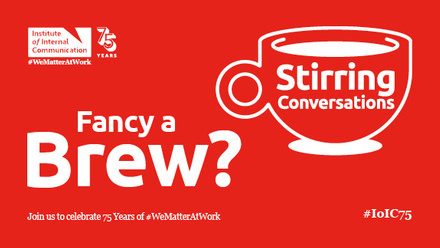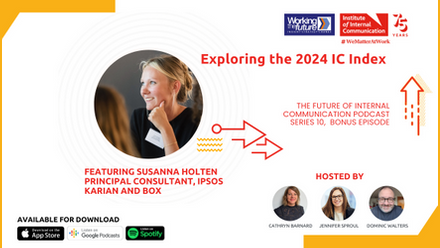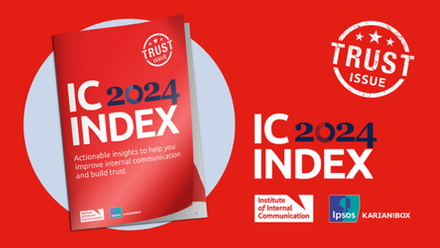Defining moments that shaped the internal communications profession

I'd mention five landmarks during my IC career, each with impacts that together have contributed significantly to the IC landscape we see today.
The first is the launch of what was originally the Kingston Diploma in IC, now the Masters in Internal Communication Management offered through IoIC and Solent University. The second is the publication of Bill Quirke's Making the Connections: turning strategy into action through internal communication. The third is the 2009 Macleod and Clarke report (Engaging for Success). The fourth was the granting of institute status to the former BACB to create the IoIC. The fifth was the broadening of internal communication into employee engagement. No doubt there are others, but these were signal moments for me in a 30-year IC career.
Steve Doswell, corporate communication consultant
I think the impact of the Covid pandemic shouldn't be underestimated. It forced an immediate behaviour change in how many people were able to work and highlighted the importance of clear, accessible internal channels of communication – particularly when thinking about health and safety-related information to all staff, even more distributed than before.
Also, the fast rollout of tools like MS Teams meant people who usually work in offices were able to continue to work at home. But that rapid rollout, often without training or guidance, means many people are still trying to get to grips with which channels to use when and why. People have figured out their own ways of working using the tools, which might work for their immediate colleagues but might not be the most effective, particularly at scale.
The pandemic also highlighted just how much people relied on informal channels, papering over cracks in internal systems by popping over to someone’s desk to ask a question, or knocking on their door. We've got more channels available than ever before, and yet anecdotally people appear to be sending more, rather than fewer emails too.
Lisa Riemers, content and communications consultant
For me, it would be the introduction of social networking to the enterprise, which, like it or not, for many remains an integral part of our personal and professional lives.
However, it poses challenges for the role of internal communication within organisations and has been quite disruptive in terms of figuring out where and how it fits alongside the traditional intranet and one-stop-shop of curated information.
Clearly, there’s no argument around it creating value: a stronger sense of community and belonging within the company, as well as increasing transparency and trust, and being able to tap into the collective knowledge of the company. But it can also lead to information overload and distraction, exposing employees to “too much” or irrelevant information, which in turn could lead to reduced productivity and the potential of conflicting messages and no “single source of truth”.
For sure, I am a fan and advocate of social platforms in the workplace, but I think many of us are still trying to navigate its ever-changing shape and impact.
Rachel Cain, corporate affairs senior director, global operations and IT communications, AstraZeneca
For a while, the often heralded “death of print” never seemed to arrive. The print industry even weathered the dawn of the internet and the launch of early smartphones.
However, in IC circles and somewhere around 2005-2008, humble employee publications – the mainstay of the IC industry – started to see the impact of the public's growing concerns for the environment. Surveys of staff magazines would see comments such as "Why are we still printing this?" and readers started to say they'd prefer to receive comms digitally. It was a justified concern and certainly the agency I was working at during that period saw a big downturn in the number of publications we produced.
It was a significant moment for me and my peers, and one that saw a massive change in the way we communicated and the solutions we offered our clients.
Tony Beresford, freelance creative director
The use of social media for internal communication is high on my list. The introduction of enterprise social networks was a game changer. It made previously “invisible” people, ideas and conversations visible inside organisations.
It also prompted a huge shift in our roles, from creation to curation, as employee-led communication increased.
We'd always had peer-to-peer, but the ability for employees to publish their views without a filter or IC sign-off turbocharged communication inside many organisations. It also led to a lot of leaders feeling uncomfortable and having to change their perception of what internal communication is (and isn't), and who is responsible.
Rachel Miller, founder, All Things IC
The pandemic changed the need for internal comms to connect a disconnected workforce. It created a surge in mobile solutions and questions that continue to be asked about the hybrid workplace. Those conversations continue as we bring people back into the office.
It put a spotlight on the value of frontline workers. In the past few years, we've seen more roles emerge internally and we've seen more practitioners hang up their consulting shingle. There will be those who embraced strategy while others who fought to remain in the weeds.
Priya Bates, president, Inner Strength Communication
The introduction of internet enabled mobile devices has transformed the methods and channels available to communicate with audiences in organisations around the world. Where previously organisations were heavily dependent on people managers to communicate new and sometimes incredibly complex information with their teams, there is now a chance to craft a message and send it to an entire global workforce instantly – cutting out the cascade entirely. This has led to a direct connection for organisations with previously hard-to-reach and deskless employees in particular.
Channels available in this space are still evolving today, especially since the pandemic, where personal internet-enabled devices enabled working practices to change at lightning speed.
But while there will always be the need for team leaders to communicate the individual impact on their teams, being able to reach these audiences through these devices massively alleviates some of that burden on managers, and gives organisations an unfiltered route of communication to their people.
Stan Methven, account manager, blue goose
The blurring of the boundary between internal and external communications thanks to social media.
Everything ever said or done inside a corporation is as much a reputational issue as everything said or done on the outside. It makes everything substantially more nuanced, complex and tricky.
Charlotte Otter, founder, Otter Advisory
Covid-19 was a mindshift for not only employees about what they value and their worth, but also employers in needing to level up and do better in many areas of IC.
Aideen Doherty, Director & Founder, Lead Well Consulting Group.
For me, it is the synergy of clearer messaging shared on executive vision in a practical way by using a good mix of technology to deliver it.
Gone are the days where teams would get one message on stage at the beginning of the year, then deviate naturally from that purpose. Now, regular IC through a variety of platforms gives a good heartbeat of content throughout the year and keeps people on track and motivated.
The technology will change but the game-changing thing for me is that there’s more than one moment of IC at a strategic level.
Lyndsey Roche, global head of channel marketing for Hexagon Manufacturing Intelligence’s SMB segment
Covid exploded the myth that people had to be in an office to be working. While it's still the prevailing mindset of many CEOs, the genie is out of the bottle and it won't go back in.
That's what's making internal communications so interesting and exciting right now – it's at the centre of a workplace revolution.
Simon Rutter, senior communications strategist, copywriter, and coach
We have got a taste of feeling needed at the height of the pandemic, but it didn’t last. I think our significant moment is to come as the sticky tape falls off companies.
Those who communicate well will have the talent with them on the other side.
Monique Zytnik, global employee communication expert
From where I sit, the pandemic shifted the IC conversation from why to how.
I spent years pounding the table about why, with what felt like only incremental progress. Since then, I rarely have to talk about why anymore. Who knew it would only take leaders having to do their own town halls from their breakfast room tables all by themselves, as one example, for them to truly understand the profession, the work and the value?
Jason Anthoine, employee experience consultant
ESN provides opportunities for leaders who are less visible in a hybrid world to be more so, as colleagues expect and need them to be.
If you ask me the same question in 75 years, I think the greatest shift will have been moving leaders from broadcasting to engaging.
Martin Stubbs-Partridge, internal communications officer, Scottish Funding Council
To me, it’s the ubiquitousness of email. It’s more than 30 years since it began being widely used and it still is the king of internal comms across industries, like it or not.
Daniel Mendez, strategic global communications leader
I’ll say the Macleod Report emphatically defined what employee engagement meant and what drove it. It was clear which bits IC could influence and which bits were HR-driven.
And it was a massive missed opportunity, because, having defined it, too many organisations ignored it, instead letting more and more definitions emerge and chasing after those, like some kind of culture whack-a-mole or lucky dip.
Kate Jones, head of communications and corporate affairs, Tarmac
My view? It's now.
Generative AI is going to transform the fundamentals of how organisations function in the same way the internet did in the 1990s. It's going to take over the bulk of the low and medium-value content creation. It's going to totally rewrite the book on trust, and it's going to significantly raise the value of the human component of what IC does to understand employees and build informal networks.
Internal social networks have absolutely had an impact, but the functionalities are five to ten years behind what employees were already used to as consumers in their non-work lives
The minute organisations figure out how to get all the taste of AI (faster and cheaper operations) with none of the calories (proprietary information being used to train the models), they will go for it – and IC needs to be ready for that. We need to be ready to credibly communicate it to our organisations and for it to transform our work.
Kathryn Kneller, independent communications consultant
There hasn’t been one yet. The most significant moment, AI, is what is going to change everything, and it’ll be the next five years that will cause people to sit up.






